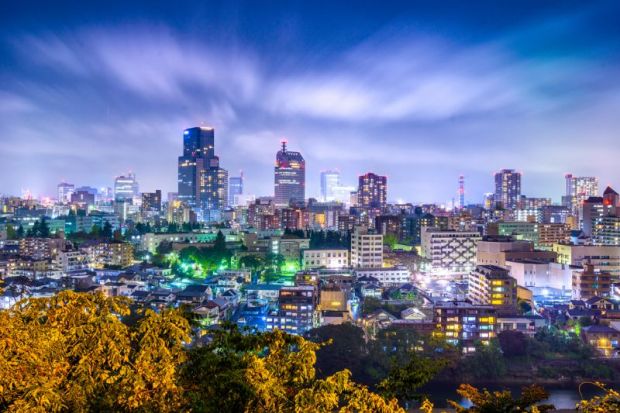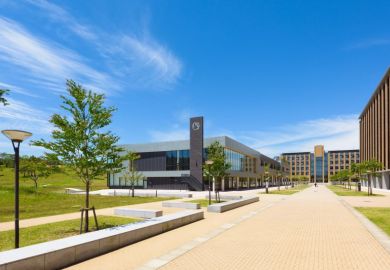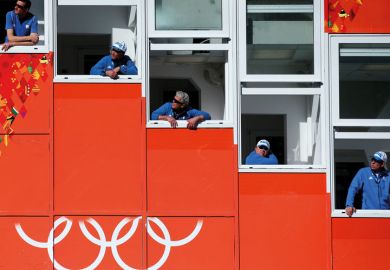Browse the THE Japan University Rankings 2020 results
Browse the THE World Reputation Rankings 2020 results
A little over a year ago, Tohoku University set in motion our Vision 2030, which identified priority projects that we wanted to accomplish in the next decade. To be ranked number one among universities in Japan by Times Higher Education this year is both an honour and an affirmation that we are moving in the right direction.
The advancement of globalisation, innovations in life sciences, the rapid spread of artificial intelligence and the internet of things are changing the way we live. Even as science becomes more sophisticated, the world – with its backdrop of climate change and widening economic disparities – is becoming more complex and polarised.
As educators, we are tasked with finding solutions. And our strategy is simple – collaborate, innovate and activate.
To better prepare our students for professional life, we have revised aspects of our undergraduate education. We have launched the Tohoku University College of Creative Endeavor to offer practical orientation within the general education programme to help students develop the kind of expertise that is in great demand today: AI data skills, entrepreneurship and, above all, a global mindset.
We are making our curriculum more international and promoting co-learning among students of different cultures through the Tohoku University Global Leader programme, in which students receive certification after completing a number of classes and activities that encourage international understanding. We also offer a wide range of scholarship programmes and study abroad opportunities with our growing network of partner universities.
For more than a century, Tohoku University has been known for its innovative research; we have invented the technology behind many recognisable appliances. By engaging in exchanges and joint research with our partner universities, we have continued to build on that reputation. Our next step is developing new academic fields and promoting cross-disciplinary, flexible learning where students can acquire new knowledge and unconventional skills.
This interdisciplinary exchange beyond the borders of singular academic fields allows for scientific achievements along new frontiers. For example, in the aftermath of the Great East Japan Earthquake in 2011, we pioneered research in next generation medicine and disaster science, giving local and global communities the necessary tools and knowledge to fight illnesses and be better prepared for natural disasters.
While the university has always been committed to community outreach – especially through volunteering, public lectures and events – we have recently engaged in more strategic collaborations with industry. This past year, we signed partnership agreements with major companies in fields such as information technology, big data and insurance, to leverage shared resources and diverse expertise.
This year also saw the near completion of the new extension of our Aobayama campus, which now houses the International Research Institute of Disaster Science, the Faculty of Agriculture and University House Aobayama – the largest student housing complex to be built at a Japanese national university. Japan’s first-ever next generation synchrotron radiation facility is also currently being built there and is expected to be operational by 2023.
Along with Aobayama, our three other campuses are spread across the cosmopolitan city of Sendai, in Japan’s northeast (Tohoku) region. A short 90-minute bullet train ride from Tokyo, Sendai is a sophisticated metropolis with museums, trendy shops and a home team in every major professional sport. But it also has a small-city charm and access to magnificent nature. In fact, given its abundance of tree-lined streets, Sendai has the well-deserved nickname of Mori no Miyako, or the City of Trees.
This past year has been good, but we are only at the beginning of Vision 2030 and we are excited about the future. As a university, we can create new values and lead social transformation and innovation. We can respond to global problems and have a real impact on the future by applying the solutions we find in many disciplines.
In short, we can collaborate, innovate, activate. We invite anyone who is interested to join us.
Hideo Ohno is president of Tohoku University.
POSTSCRIPT:
Print headline: Forward-thinking vision
Register to continue
Why register?
- Registration is free and only takes a moment
- Once registered, you can read 3 articles a month
- Sign up for our newsletter
Subscribe
Or subscribe for unlimited access to:
- Unlimited access to news, views, insights & reviews
- Digital editions
- Digital access to THE’s university and college rankings analysis
Already registered or a current subscriber?








